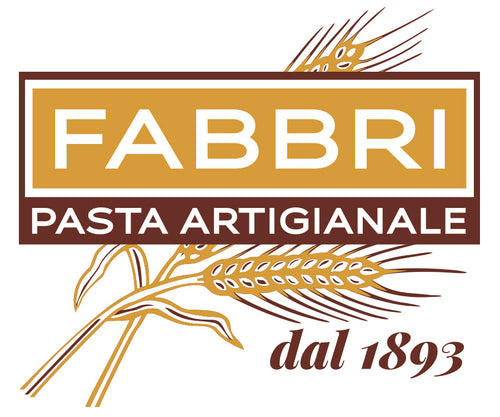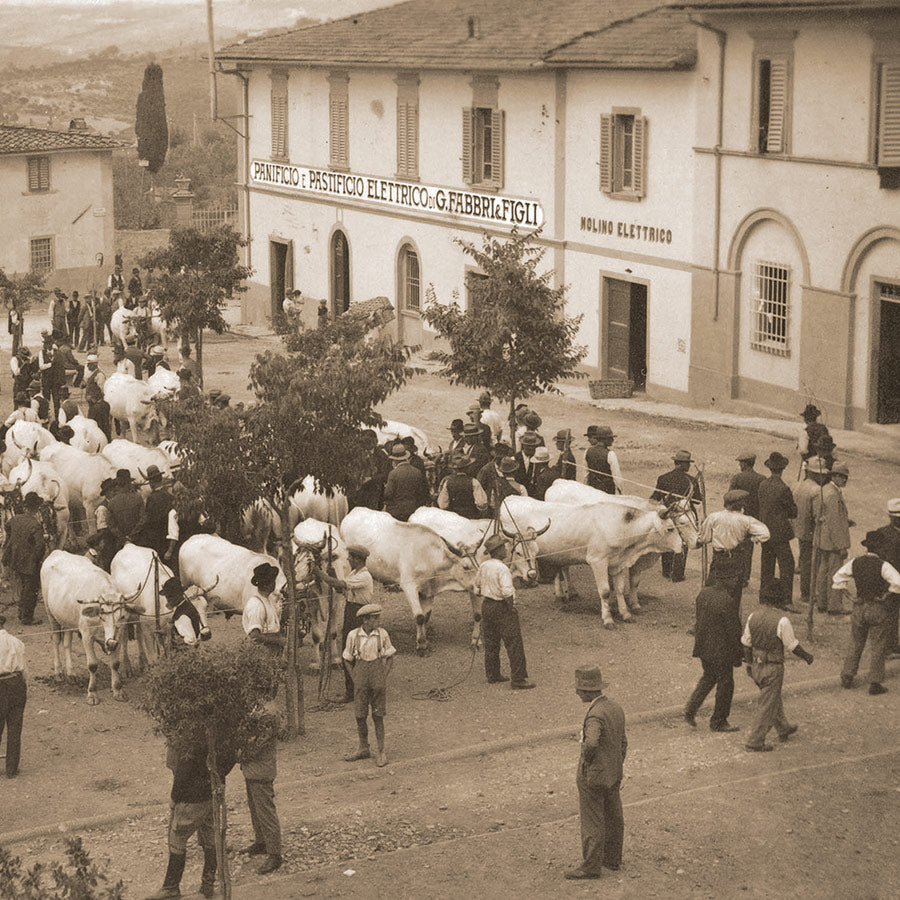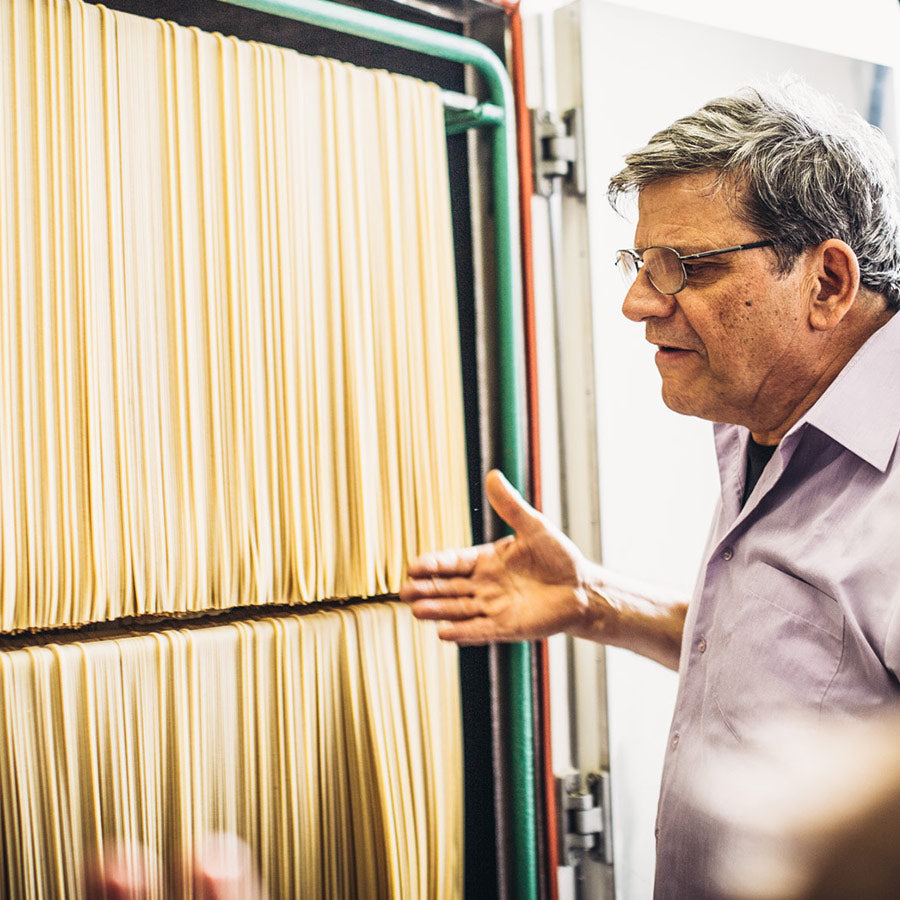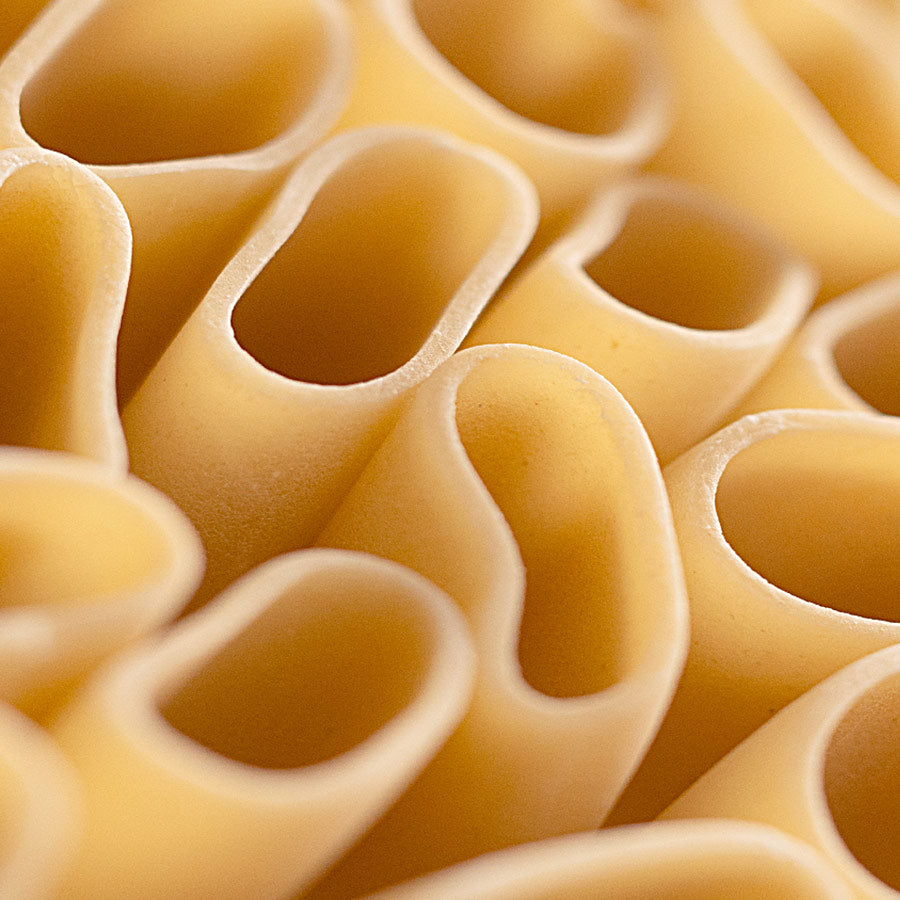“Le Figaro Magazine” nel Pastificio Fabbri: bonjour de la France !

Le Figaro Magazine in Strada in Chianti: We opened the doors of Pastificio Fabbri
'Le Figaro Magazine' Tuscany Special, June 15, 2018
Translation of the article in Italian: (Download the original article in French as PDF)
Excerpt from the article:
"If there is something you shouldn't mention in front of Giovanni Fabbri, it’s 'gluten-free'. The heir to a family-run artisanal pasta business founded in 1893 in Strada in Chianti, this outspoken producer cannot find words harsh enough to condemn this dietary trend. In his pasta museum, located on the first floor of the company where he keeps historical documents and old tools, our passionate host demonstrates the absurdity of this diet. After grinding a handful of durum wheat, he cleans the semolina with water until he forms a white, malleable ball resembling chewing gum. 'Here is the gluten! For thousands of years, the human intestine has perfectly assimilated it, and the body needs it.'
Giovanni Fabbri knows everything about pasta. And he proudly shows visitors around his business. Beyond the durum wheat semolina that enters the factory, sourced from old varieties still cultivated by a few farmers, the secret of Fabbri pasta lies at the exit of the press. Giovanni invites us to follow the carts carrying fresh spaghetti hanging on rods to the drying chamber. 'Industrial producers raise the temperature so that pasta dries in an hour. Here, we never exceed 38 degrees, with a drying time of three to six days.'
Fabbri’s spaghetti is less brittle, and its texture is different. During cooking, the boiling water in which the pasta is immersed immediately turns white and cloudy. 'Our production method allows us to preserve the gluten and starch in their natural state, making it easier to digest.'
Based on scientific articles by a professor from the University of Florence, the pasta factory in Strada in Chianti is ready to fight against the gluten-free advocates and industrial producers who use cheap and inferior wheat varieties. 'Many farmers abandoned ancient grains because their stalks were too tall, making them more susceptible to weather conditions. That’s a mistake; we need to rehabilitate them in the name of public health.' As for the long drying process, he admits that this technique comes at a cost. 'Our pasta is more expensive, but it holds its shape better during cooking, and its flavor is so much richer.' Not to mention the label 'WITH gluten.'"
















